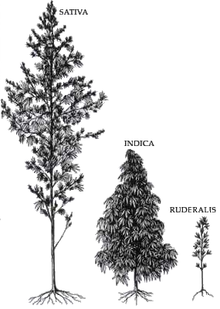
Crocheted with glass blue and soft green "Elsebeth Lavold" Hempathy yarn, a hemp/cotton/modal (plant fiber) blend in pretty spring colors.

Less feminine but still cute enough for the ladies: Hemp and virgin wool blend in natural, ash blue and muted burgundy

Larger and more rustic: hemp and virgin wool in rust, natural and walnut brown, great for the guys, too
(Just freshly listed at Purple Sage Designz)
How come, you will ask?
It proves that my listings have a good chance of being found by google searches. I love google.
It's my #1 way of searching for products, and I am glad it works for me as a seller as well.
(Okay, okay, I hate facebook and twitter, am too frugal for paid ads and like to keep my blog more personal... :)
Today I wanted to show off the new tams crocheted with hemp blends. And add a bit of info about hemp yarn as an industrial/commercial material (wikipedia is my best friend).
Hemp
From Wikipedia, the free encyclopedia
Hemp (from Old English hænep) is the name of the soft, durable fiber that is cultivated from plants of the Cannabis genus, cultivated for industrial and commercial (non-drug) use.
In modern times, industrial hemp has been used for industrial purposes including paper, textiles, biodegradable plastics, construction, health food, and fuel,[1] with modest commercial success.[2][3] In the past three years, commercial success of hemp food products has grown considerably.[4][5]
Hemp is one of the fastest growing biomasses known,[6] producing up to 25 tonnes of dry matter per hectare per year,[7] and one of the earliest domesticated plants known.[8] For a crop, hemp is relatively environmentally friendly as it requires few pesticides[9] and no herbicides.[10]
Cannabis sativa L. subsp. sativa var. sativa is the variety grown for industrial use in Europe, Canada, and elsewhere, while C. sativa subsp. indica generally has poor fiber quality and is primarily used for production of recreational and medicinal drugs. The major difference between the two types of plants is the appearance and the amount of Δ9-tetrahydrocannabinol (THC) secreted in a resinous mixture by epidermal hairs called glandular trichomes, although they can also be distinguished genetically.[11] Strains of Cannabis approved for industrial hemp production produce only minute amounts of this psychoactive drug, not enough for any physical or psychological effects. Typically, hemp contains below 0.3% THC, while Cannabis grown for marijuana can contain anywhere from 6 or 7 % to 20% or even more.[12]
Industrial hemp is produced in many countries around the world.[13] Major producers include Canada, France, and China. While more hemp is exported to the United States than to any other country, the United States Government does not consistently distinguish between marijuana and the non-psychoactive Cannabis used for industrial and commercial purposes.[12]



No comments:
Post a Comment